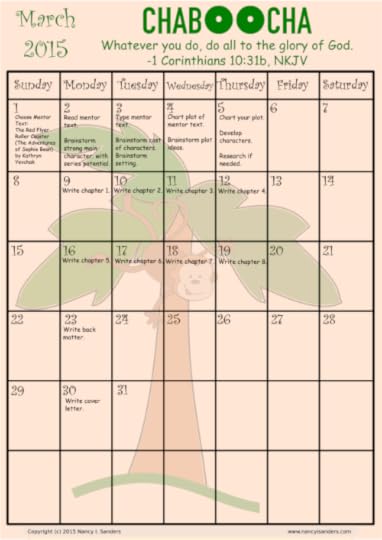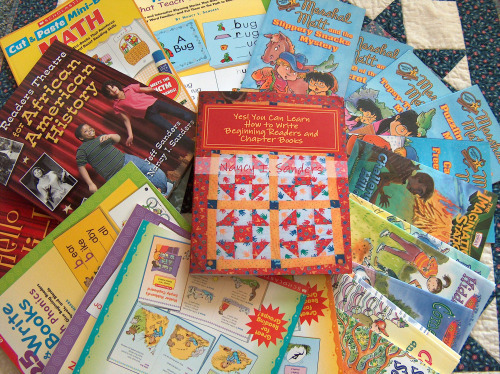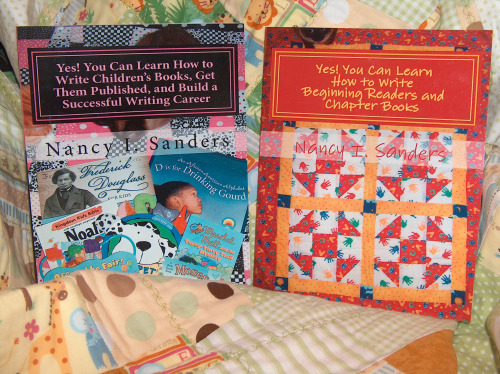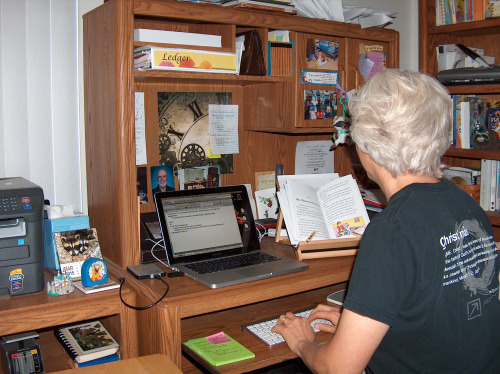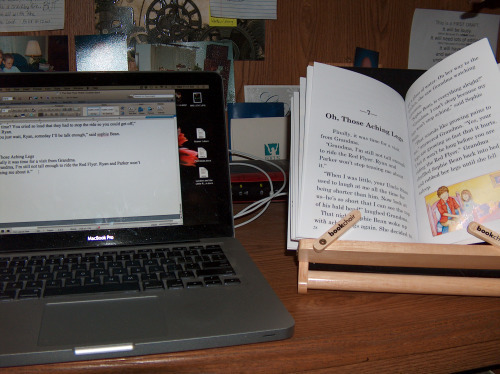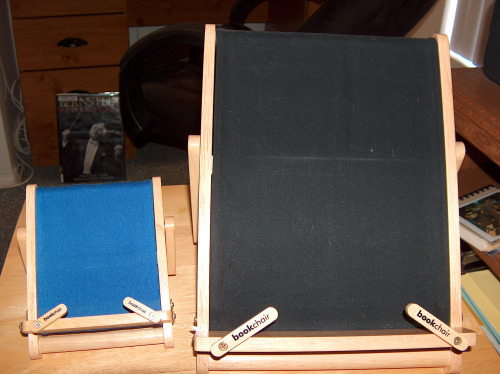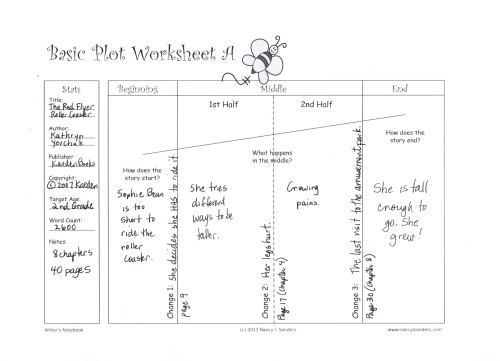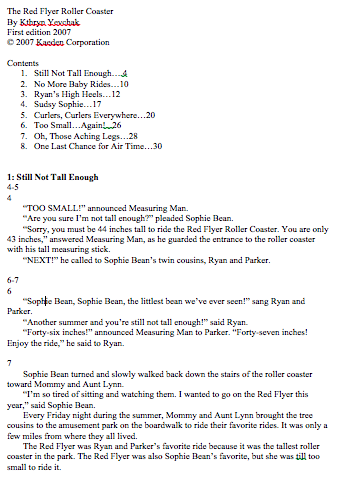Nancy I. Sanders's Blog, page 47
March 13, 2015
Book Review: Words To Dream On
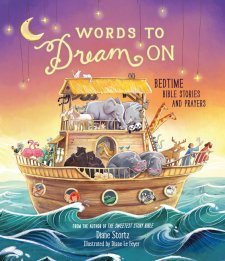
Words to Dream On: Bedtime Bible Stories and Prayers
By Diane Stortz
Art by Diane Le Feyer
Summary
This is a sweet and beautifully illustrated 224-page book with over 50 Bible stories from both the Old and New Testament. Each selection starts by listing which Scriptures the story covers so you can read it from a Bible if you’d like. There is also one key verse before the story starts called “Words to Dream On” which gives the theme of the story as a nice take-away for bedtime devotions. After the story is finished, there is a “Bedtime Blessing” which is an encouraging thought to leave with your child before you turn out the light along with a “Sleepy-Time Prayer” to pray together. At the end of the book there is a short section of tips to help create a happy bedtime routine with your child.
What I Like
I especially like the whole feel of this book. What a beautiful, tender, and biblical treasure to share each night together as you tuck your little one into bed! I love all the features that make it perfect for using with a bedtime routine such as the “Bedtime Blessing” and “Sleepy-Time Prayer.” The art is so fresh, original, and delightful, too. I especially like how in night-time scenes (including on the cover) it looks like the stars are hanging on strings from the sky. So adorable!!!! Between the beautiful re-tellings of these Bible stories in words little ones can understand and the soft and endearing illustrations, this is sure to become a favorite for families who are intentional about sending their children off to dreamland with God’s Word tucked into their heart and the love of God wrapped like a blanket around them.
-Thanks, BookLook Bloggers for another wonderful free book in exchange for my honest review!
Filed under: Book Review

March 11, 2015
Challenge: Write a Chapter Book in One Month
If you’re following along with my calendar this month to write an early reader chapter book using THE RED FLYER ROLLER COASTER as your mentor text, today we’re working on Chapter 3.
As you’re writing new content for this chapter as well as editing Chapter 2 which you wrote yesterday, there are a couple of tips I’d like to share.
For starters, both of these chapters are all about different ways your main character is trying to solve the main story problem. In our mentor text, Sophie Bean informs Grandma that she is simply too big to ride the merry-go-round any more but she’s still not tall enough to ride the roller coaster.
In Chapter 3, Sophie Bean brings along a pair of Mommy’s high heels to wear to make her tall enough to go.
What is your main character trying to do in your Chapters 2 and 3 to solve her main story problem? Show this happening in your Chapters 2 and 3.
Also, let’s talk a little bit about transitions.
Chapter 2 is one complete scene.
It starts with a TRANSITION: “When they got home…”
This transitions from the previous scene in the last chapter to the next scene in Chapter 2.
You’ll find transitions such as these in between scenes in our mentor text and you can use similar ones in yours. When you’re writing a short chapter book such as this with a limited word count, you don’t want to waste an entire paragraph moving from scene to scene.
On page 12, the transition in between scenes is “The next week…”
On page 17, the transition in between scenes is “The next week…”
On page 18, the transition in between scenes is “At the beach…”
On page 20, the transition in between scenes is “A few weeks later…”
You can go from scene to scene with very short transitions just like these to move quickly through the passage of time to concentrate on scenes, the building blocks of your story!
Filed under: Beginning Readers, Chapter Books

March 9, 2015
Free How-to Writing Book Give-away!
I wanted to let you know you can enter a free book give-away for a copy of my book, YES! YOU CAN LEARN HOW TO WRITE BEGINNING READERS AND CHAPTER BOOKS.
It’s happening at the Chapter Book Challenge site, CHABOOCHA!
So hop on over and post a comment to enter to win. This book is a must-have on your writer’s bookshelf if you want to write early readers, beginning readers, chapter books, or even if you want to write your book at a certain reading level so kids in a certain grade can read it.
And if you already have a copy, it’s also a great gift for your writing buddy or fellow critiquer!
Yes, I’m the author of this book. If you look in the photo above, it’s the red book in the middle of the stack of books. Those other books are some…just some!… of the early readers and chapter books I’ve written over the years. I drew from the experiences I’ve had writing those books to get the material for this how-to book.
And to see both my how-to books for children’s writers, here’s another picture! My other book (the pink and black one) YES! YOU CAN LEARN HOW TO WRITE CHILDREN’S BOOKS, GET THEM PUBLISHED, AND BUILD A SUCCESSFUL WRITING CAREER is all about strategies I’ve used to build a successful writing career so you can, too!
Filed under: Beginning Readers, Chapter Books, Free Giveaway

Challenge: Write a Chapter Book in 1 Month
I thought you’d like to see a picture of me typing out my mentor text last week. That’s because today we’re going to really use some of the stats from our mentor text, THE RED FLYER ROLLER COASTER to help us write our first chapter and start off with a BANG!
And just in case you were wondering, I have my book propped up next to my computer in a bookholder called a BookChair. You can see a couple of close-up shots down below of the two sizes I have.
I must say I love love love this BookChair! Unfortunately it’s not produced anymore but you can still buy a couple of them new or used for under $20 at a reseller such as on Amazon. I keep mine next to my computer and it’s the handiest thing for propping up a book when you are:
* typing out your mentor text
* typing up your bibliography
* typing research notes into your document
Just thought I’d share how much I love this in case you were looking for something like this to make your writing life easier.
Okay, now for our focus on writing today. If you’re following along with me on my calendar to write an early chapter book, today’s the day we write Chapter 1.
Let’s look at the stats in our mentor text first, though.
When I ran a spelling and grammar check on Chapter 1 in the text I typed out for THE RED FLYER ROLLER COASTER, here’s what I discovered:
It had 370 words. (We can DO this today, friends!)
It had 18 paragraphs. (Yep, I know we can do this today.)
It had 29 sentences. (YES! We can write less than 30 sentences today for our goal.)
On the average, it has 1.7 sentences per paragraph. (We’re talking short paragraphs here)
It had 12.7 words per sentence. (Not too short and not too long)
It had 4.4 characters per word. (Most words were on the short side so kids could read them easily.)
It had 0% passive sentences (no weak verbs here!)
The Flesch-Kincaid Grade Level was 5.3 for readability. (That seemed a little high for second graders so I’m actually trying to keep below that for my own text.)
I felt encouraged already.
Then I ran a spelling and grammar check on the FIRST SCENE in Chapter 1. That’s because the first scene of a book is very, very important to hook the reader (and the editor!).
To help clarify exactly what the FIRST SCENE is, I’ll share it with you here, along with the readability statistics and a few other notes:
Scene 1
3 pages in published book or 1 and 1/2 spreads
Readability Statistics
145 words
12 paragraphs
13 sentences
1.4 sentences per paragraph
10.9 words pre sentence
0 passive sentences
5.2 Flesch-Kincaid Grade Level
���TOO SMALL!��� announced Measuring Man.
���Are you sure I���m not tall enough?��� pleaded Sophie Bean.
���Sorry, you must be 44 inches tall to ride the Red Flyer Roller Coaster. You are only 43 inches,��� answered Measuring Man, as he guarded the entrance to the roller coaster with his tall measuring stick.
���NEXT!��� he called to Sophie Bean���s twin cousins, Ryan and Parker.
���Sophie Bean, Sophie Bean, the littlest bean we���ve ever seen!��� sang Ryan and Parker.
���Another summer and you���re still not tall enough!��� said Ryan.
���Forty-six inches!��� announced Measuring Man to Parker. ���Forty-seven inches! Enjoy the ride,��� he said to Ryan.
Sophie Bean turned and slowly walked back down the stairs of the roller coaster toward Mommy and Aunt Lynn.
���I���m so tired of sitting and watching them. I wanted to go on the Red Flyer this year,��� said Sophie Bean.
There are several things to note about this opening scene.
#1. It starts right in the middle of the action. Start your first scene right in the middle of the action.
#2. It’s nearly all dialogue. Make your opening scene have lots of dialogue.
#3. There’s hardly any description other than “tall” measuring stick and “twin” cousins. This means at this reading level you really don’t need to tell the reader Sophie Bean had freckles or was wearing a pink shirt and blue jeans skirt. The kids can see this in the illustration. So don’t put lots of description into your first scene.
#4 Each character has a name, even Measuring Man. Give your characters names, especially fun ones.
#5. We already know the main story problem in the opening lines: Sophie Bean is too small to ride the roller coaster. Let your reader know your main story problem in the first opening lines of your scene.
Do you feel ready to write your first scene? At this level, it won’t be very long. Then finish the rest of your first chapter so that it’s close to the same word count as this one.
One last note: The last sentence of Chapter 1 in our mentor text is CHANGE 1 on our plot chart.
“She just had to get on that roller coaster.”
By the last sentence of your first chapter, plug in CHANGE 1 as well. Bring the reader into Act II by having him pass the bridge of no return.
If you’re just not sure about all this early chapter book stuff, it might help to read my book, YES! YOU CAN LEARN HOW TO WRITE BEGINNING READERS AND CHAPTER BOOKS. Chapter 12 will be especially helpful this month for the CHABOOCHA challenge.
I’ve written a number of chapter books for various publishers at various reading levels both fiction and nonfiction and share lots of strategies and tips in my book to help you experience success in this fun genre. If you don’t have the time or resources to buy it now you can always read lots of the text for free on the LOOK INSIDE THE BOOK feature on Amazon. Maybe it will help you this week as you’re working on your first half of this 8-chapter chapter book!
Filed under: Beginning Readers, Chapter Books

March 6, 2015
Challenge: Write a Chapter Book in 1 Month
I want to encourage you to enjoy the journey you’re taking this month to join the ChaBooCha challenge to write a chapter book in 1 month.
One of the ways to enjoy your adventure better is to learn to listen to your inner voice.
For example, if you’re working hard today on plotting your own story plot but your cast of characters keeps talking in your head, go ahead and put your plot aside for a little bit and let your characters speak.
Have fun typing down the conversations they’re having with each other or the scenes that are unfolding in your brain.
Then when they’re finished for awhile, you can come back to the task for the day.
This happened to me. I was in the middle of typing out my mentor text THE RED FLYER ROLLER COASTER when I couldn’t get the opening scene out of my mind. So I stopped, wrote down the scene that was begging to be told, and then when that was finished, I went back to my file and continued typing out my mentor text word for word.
Another way to enjoy the journey more is to learn not to be too much of a perfectionist. Writing is, after all, more like planting a garden than it is like baking a cake.
If you get an ingredient wrong in the cake it will turn out strange or even a total flop.
But if you plant seeds in the wrong spot in your garden and discover they need more sunlight or more shade, you can simply dig them up and replant them in the right spot.
So go ahead and sit down at your computer or put pen to paper and focus on each day’s task without stressing that it’s perfect. A manuscript will never be perfect even when it’s published. You’ll always find things you’d like to fix.
Just work on your task for today and make it the best you know how to do it at this time and then move forward to tomorrow. You can always come back and revise and edit and polish what you worked on at a later time.
Filed under: Beginning Readers, Chapter Books

March 4, 2015
Challenge: Write a Chapter Book in 1 Month–Plot
If you’re following along with the CHABOOCHA challenge this month and also writing an early chapter book using THE RED FLYER ROLLER COASTER as your mentor text, scheduled on the calendar for today is “Chart plot of mentor text”
and brainstorm plot ideas.
As a working writer under contracts to write various books from magazine stories to picture books to chapter books, I always start first by using my Basic Plot Worksheet A.
And when I’m following a mentor text, I like to first chart the plot of my mentor text before I tackle my own work in progress.
You can see the information I filled in along the left column of the chart above.
Then, for the plot elements I first had to ask myself what the main story plot is for THE RED FLYER ROLLER COASTER? That led me to the main story problem which is that Sophie Bean is too short to ride the roller coaster.
After I identified that, it took a little digging around to discover the 3 key changes that take place in the story:
Change 1: Takes us from the beginning of the story where we see the main story problem and starts the middle of the story where now we see Sophie Bean is determined to do something to solve this problem.
Change 2: This is the turning point of the whole story where suddenly Sophie Bean has a new problem to deal with…her legs hurt.
Change 3: Suddenly Sophie Bean finds out it’s the last day to go to the amusement park this summer and thus the last chance she’ll get to ride the roller coaster!
And then we learn the conclusion to the story: Her legs hurt because they were growing pains and she grew tall enough to go on the roller coaster. Yay!
One of the nice things about writing a book for this reading level is that the plot is pretty straightforward. There is a clear beginning, middle, and end. The problem is presented in the first couple of paragraphs of the story and it all wraps up nicely at the end…even with a fun surprise by having grandma ride with her for her very first ride on the roller coaster.
As you’re preparing to plot your own story tomorrow, keep all these basic elements in mind. For a book at this readability level you don’t even need a subplot. Just keep it nice and simple. It’s a great way to get our feet wet writing these chapter books, don’t you think?
So as you’re brainstorming plot ideas today, just think of these basic story elements:
A) What is your main story problem that the main character struggles with? This is how your story should start.
B) What is the first change that happens where your main character sets off on her journey to solve the big problem?
C) What is the turning point, the second change that happens to lead your character toward the ending of the story and the solution to her problem?
D) What is the third change that happens to your character to lead her to the end of the story.
E) How will the story end and how will your main character solve the main story problem?
Having these elements in your head will help you as you start to write your story next week. It will be your road map to success. Brainstorming ideas today will give you material to help you plot your own story on the BASIC PLOT WORKSHEET A tomorrow.
To download your own copy of my Basic Plot Worksheet A, please visit the site of my writing buddies, Writing According to Humphrey and Friends. Scroll down to the CHARTS AND WORKSHEETS TO GET ORGANIZED FOR SUCCESS and click on the link to download and print your own copy of the BASIC PLOT WORKSHEET A. You can use it tomorrow to plot the structure of your own chapter book so you’ll be all ready to start writing next Monday!
Filed under: Beginning Readers, Chapter Books

March 2, 2015
Challenge: Write a Chapter Book in 1 Month
ChaBooCha is officially happening and I hope you’re having fun so far!
I just wanted to update you on what I’ve been doing so far so you can try out some of the strategies I’m doing to see if they work for you, too.
I’m following my calendar, so after reading my mentor text, I brainstormed ideas for my main character.
Here’s how that brainstorming session went:
1) First I made a list of some early chapter book or easy reader main characters that have been popular with kids in kindergarten through second grade. I just made a short list, but here’s what I came up with:
Cam Jensen
Nate the Great
Junie B. Jones
The Magic Tree House
Ramona the Pest
The Imagination Station series with Patrick and Beth
2) I tried to think of qualities that kids like about these characters and why they appeal to young readers.
The main reason I stopped making this list was because an idea popped into my head at this point for a character of my own.
3) So I just spent an hour or so letting my brain “play” with the idea. It actually was in a helpful mood this afternoon and gave me lots of ideas including conversations my character might have, background stories of my character, and also information about my main character’s family members. During this time my brain was popping with plot ideas and setting ideas, too, so even though I won’t officially spend time on those topics until another day this week (see the calendar) I went ahead and jotted down all the ideas that came to me so I could explore them more later.
After spending this chunk of time with my potential character, I decided to choose him as the one I’ll write about this month.
I want to encourage you not to stress too much about this decision for your character. Just pick one that seems good for now. If at the end of the month it’s not your favorite decision, you can try out a different character in a brand new story.
Whether or not you were able to generate a lot of ideas about your main character, to help you brainstorm more about your main character plus tomorrow when you brainstorm your cast of characters, visit the site of my feline writing buddies, Writing According to Humphrey and Friends.
You’ll find some helpful activities you can do to create a strong character that has potential for a series. This is the kind of character Kaeden Books is looking for in their early chapter books, so that’s my goal for the CHABOOCHA challenge this month.
Filed under: Beginning Readers, Chapter Books

Challenge: Write a Chapter Book in 1 Month
Today is all about typing your mentor text, brainstorming your cast of characters, and brainstorming your setting.
If your mentor text is really really long, you don’t have to type the whole thing. Even typing out a chapter or two will help.
But if you’re using THE RED FLYER ROLLER COASTER as your mentor text, go ahead and type out the whole thing. It’s only 2600 words.
Many folks ask me why I type out my mentor texts and encourage others to do the same. It’s for a variety of reasons.
Reason #1 is that it helps train your brain to think in this genre and reading level.
Reason #2 is it makes it handy to highlight various portions of text and run a work count or readability level or other test on it.
Reason #3 is it gives me practice typing out a book the same length mine is going to be. This way I can see how many manuscript pages it takes for each chapter and for the entire book.
I’ve finished typing out 2 chapters so far of THE RED FLYER ROLLER COASTER. Here at the bottom is a picture of how I’m doing it. I’m dividing it up per page number so I can keep an eye on that as well.
Now as you’re brainstorming your characters and setting, I want to remind you of something. If you’re writing a story to submit to Kaeden Books as I am, know that Kaeden Books purchases all rights to your manuscript. So be sure to choose a cast of characters that you can give away.
If you have ideas for characters based on your own family or on ideas that are near and dear to your heart, you might want to save those for a manuscript to submit to a publisher that will allow you to register the copyright in your own name. Kaeden registers the copyright in their name which means they own the rights to the story. (You can find out this info by seeing who the copyright is listed under on the copyright page of every book.)
When I write for publishers who purchase all rights to my stories, I like to use ideas that aren’t near and dear to my heart. The QUALITY of the stories are still tops, it’s just that I’m not as attached to the TOPICS.
And with that in mind, I wanted to let you know that after this month is over, I’ve decided to write a second chapter book using THE RED FLYER ROLLER COASTER (or a similar-length chapter book) as my mentor text. I’ll be posting about the journey here on my blog. Only next time we won’t be rushing along to finish it in just one month. We’ll go more slowly and really try to dissect this whole process and learn the skills it takes to write these types of books. And I might not submit the next manuscript to Kaeden Books but to my agent instead to try to get it published with a publisher where I can keep my own rights. We’ll see.
But for now, if you’re brainstorming ideas for characters and plot and setting this week and plan to submit your manuscript to Kaeden Books, just be sure you use ideas that are okay in your writer’s heart to give the rights away.
—————————————————————–
Filed under: Beginning Readers, Chapter Books

Challenge: Write a Chapter Book in 1 Month
I hope you’re as excited as I am to join the challenge to write a chapter book in just 1 month!
This month I’m joining CHABOOCHA and am planning on writing a chapter book from beginning to end. And after I’m done, I’m planning on submitting it to Kaeden Books, who says in their submissions guidelines that they are particularly interested in receiving beginning chapter books!
So I’m going to be totally honest here.
I’m at square one just like you are.
I am starting this challenge today, just like you are.
I don’t have my characters picked out.
I haven’t the slightest idea what my plot will be.
I don’t even know my setting.
But the one thing I DO have is my mentor text. It’s The Red Flyer Roller Coaster which is published by Kaeden Books.
So this month here on my blog, I’ll be sharing step-by-step what I’m actually doing to write this chapter book from beginning to end.
If you want to write one using the same mentor text so you can follow along more closely with me, then go ahead and order it in. If you have your own mentor text or if you want to write a middle grade novel instead of a early chapter book, you might benefit more from following along with my Middle Grade Novel teleclass workshop.
And if you sorta kinda wanna try writing this challenge but you’re just nor sure how practical it is to write a whole book in one month, I’ll let you in on a couple of insider information on the real world of a children’s writer.
This last week I heard out of the blue from an editor who offered me a contract for a 6-week project to write a 8000-9000-word manuscript for teens. (That’s 3 times as many words as THE RED FLYER ROLLER COASTER and what I’ll be writing this month for my chapter book.)
And I also had a phone call from another editor last week who said that IF they decide to move forward on a chapter book for which they MIGHT offer a contract to me, it might need to be a really fast turnaround. Like maybe three weeks for 10,000 words.
So it’s challenges like the one we’re doing here on my blog this month that help me strengthen my writing muscles and keep in shape to feel capable to sign these contracts and then write and deliver those manuscripts. (And then get the nice paychecks in the mail!)
I hope you decide to join in the adventure!
As I explained, I’ll basically be sharing here on my blog the actual steps I’m taking to write my own chapter book this month.
And the first thing I did was make a calendar to follow. I don’t know about you, but calendars help me pace myself and get a project done on time. I don’t always stick with a calendar, but I make adjustments if I need to as I move along.
As you can see if you look at today’s assignment on the calendar, today’s a good day to read your mentor text and brainstorm ideas for your main character. Kaeden Books says in their submission guidelines that they are particularly looking for “manuscripts with strong characters with potential to become a series.” Plus they expand that to say they’re looking for “interesting characters that will appeal to children in pre-kindergarten through second grade.”
Let me know if you need help on how to brainstorm characters that fit this description.
Also, you can print out the calendar that I’m going to follow. But if your writing schedule is different or you’d like to use a blank calendar, I also included a blank calendar with the monkey in the middle OR a totally blank calendar with no graphics at all for you to use. You can download and print them out here:
Filed under: Beginning Readers, Chapter Books

February 27, 2015
Write a NF Picture Book in 1 Week: Final Day
For those of you who have been joining in on our adventure, I hope you’ve been enjoying the process of writing a nonfiction picture book in just one week.
And for those of you who are already overpacked with other projects (whether writing projects or just stuff) I hope you earmark these notes to use when you have time to work on your nonfiction manuscripts.
Thank you for following along! It’s hard to believe we started this journey last October to write and submit a nonfiction book to Kaeden Books.
First we just went through the process, step-by-step where I showed you what I do…actually do…to write an early reader nonfiction picture book manuscript to submit to a publisher.
Then this past month, once we had all the basics down, we sped up the process to write a second manuscript in three weeks from beginning to end.
And for this last leg of journey, we sped up the process once again to write a third manuscript in just 1 week from beginning to end.
I’m wrapping up my manuscript today and hope to pop it in the mail tonight.
I don’t know about you, but for me this produced a great feeling of satisfaction on various levels:
1) I could feel my writing muscles stretch and get strengthened each step of the way.
2) The task actually became easier each time I wrote a brand new manuscript to submit.
3) Now I have 3 new nonfiction early reader picture book manuscripts.
For those of you who wrote one, two, or all three manuscripts, what are some of the highlights for you? And for those of you who followed along but are waiting to write your manuscripts at a future date, what did you learn over these past months together?
If you remember back in October of last year at the start of this journey, we were going to learn how to write chapter books to submit to Kaeden Books, too. But then I opted to dig into nonfiction first.
But now we’re back where we started from and are all ready to launch into chapter books.
And as I mentioned before, the timing is perfect because we’re going to follow along with CHABOOCHA all during the month of March right here on my blog…the Chapter Book Challenge… to write a complete chapter book from beginning to end all in just one month!
I’m hoping you’ll join in the fun…it all starts right here on Monday, March 2!
Filed under: Beginning Readers, Nonfiction, Picture Books

Nancy I. Sanders's Blog
- Nancy I. Sanders's profile
- 76 followers



